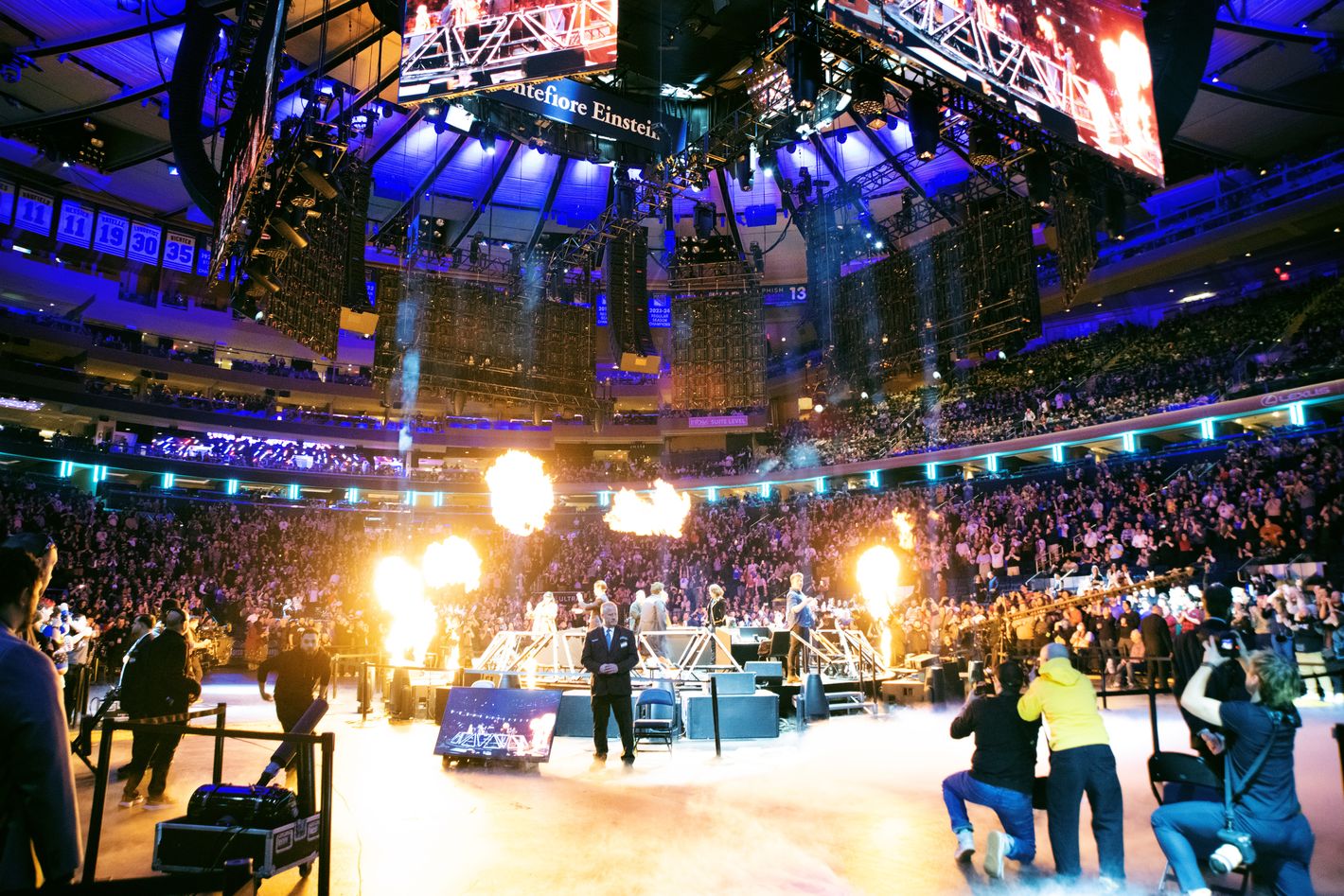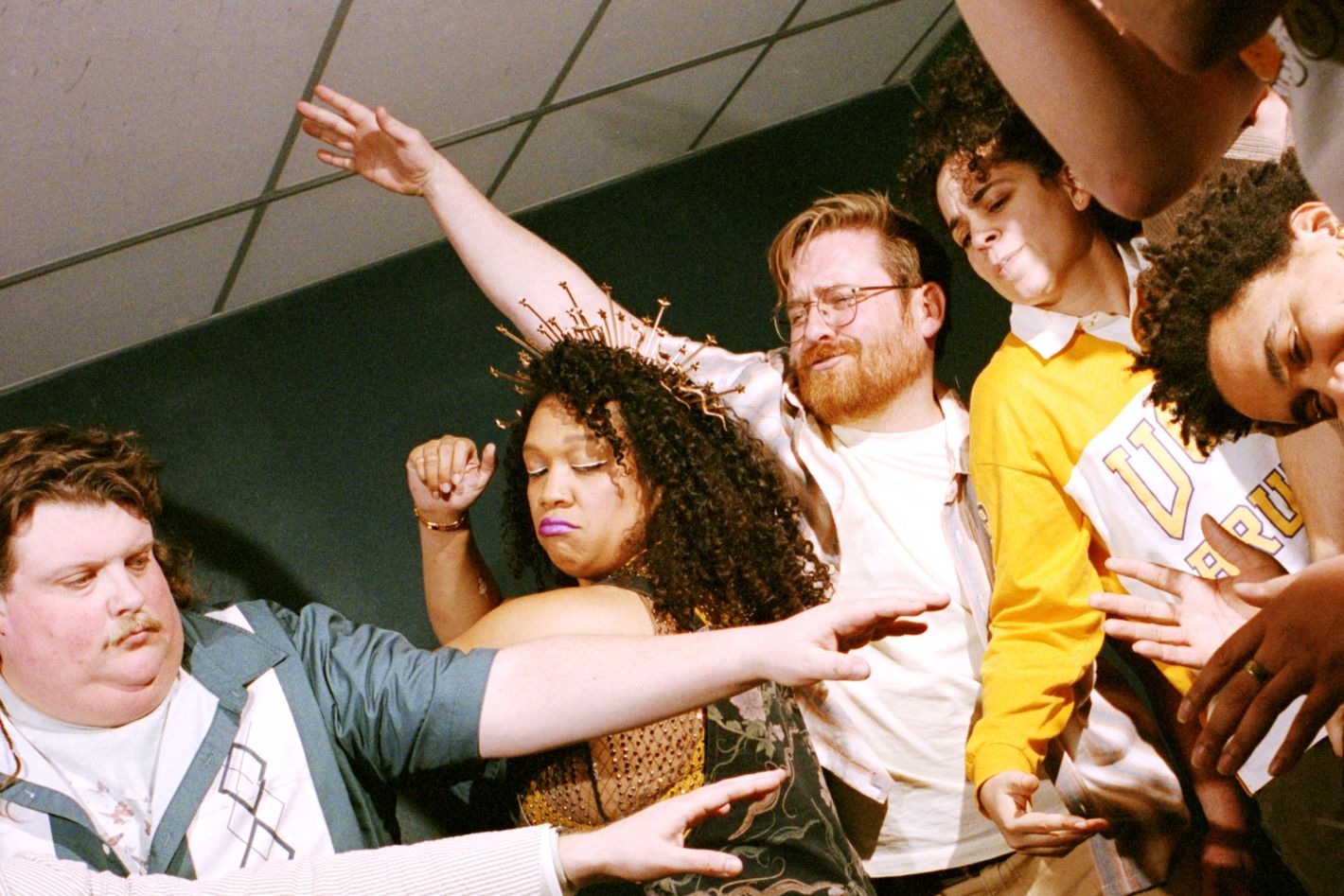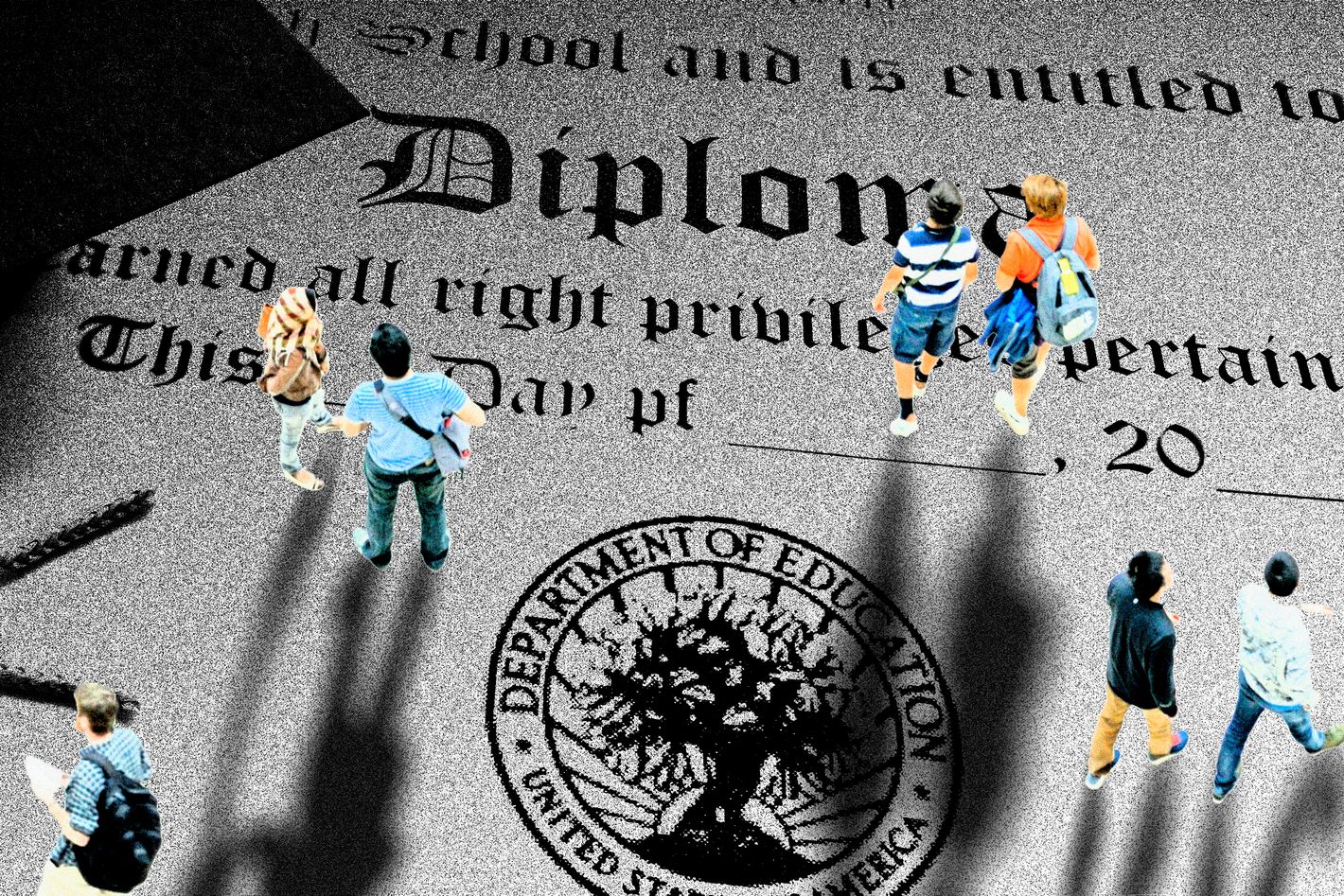
As freshmen settle in for their first year of college, their arrival on campuses marks a milestone higher education has long dreaded: this incoming class is the last big one before a prolonged decade-plus drop off begins.
Starting this year, the graduating classes of high schools across the country are getting smaller, the result of fewer people having children during the Great Recession and the years after. Even after the economy rebounded, the birth rate kept dropping. The COVID pandemic led to another sharp decline.
This is the beginning of what college officials call the “demographic cliff.” Higher education is one of the few industries that can predict its future customer base far in advance. When college leaders look at the projections of high-school graduates, they see down arrows only every year through 2041 — by then totaling a 13 percent drop overall to 3.4 million high-school graduates from nearly 3.9 million this year.
This doesn’t sound like bad news to everybody though. What alarms campus officials suggests an opportunity to many parents who assume the shift will work in their favor, improving their kids’ odds of getting into top-ranked schools or securing bigger breaks on tuition from colleges desperate to fill seats. Just this spring, before the enrollment cliff really hit, several colleges sent out surprise financial-aid packages to students who had already committed elsewhere in an effort to lure them in after coming up short in attracting enough freshmen to fill empty seats.
That may happen in some contexts. But higher education isn’t monolithic —even though we talk about college like it is — and the reality of what’s coming for teenagers and their families is complicated by geography and a college’s position in the larger market.
At an industry level, the demographic cliff is likely to leave the U.S. with a very different higher-education landscape from the one we know today with nearly 4,000 schools. Some colleges will close, merge, or be acquired by stronger players. Many others will limp along eventually resembling malls with vacant stores — bringing in just enough money to keep going but not enough to maintain their buildings or provide the kinds of services that add up to a good student experience.
For families already navigating a college-admissions process reshaped in recent years by test-optional policies and the growth of early applications, the demographic cliff adds yet another wrinkle. Should students take that shot at the elite schools on the chance they’ll be slightly easier to get in to? Will tuition discounts become more generous, but where? And how can families be sure the school they eventually choose will still have the resources to invest in facilities and programs after their kids arrive on campus? These are questions that students and parents didn’t need to ask a decade ago; now they will define both the college search for teenagers in the near term as well as the future of higher education in the U.S..
“There simply aren’t enough students to go around,” said Nathan Grawe, an economist at Carleton College in Minnesota. But the effects of the demographic cliff, he noted, “won’t be evenly distributed.”
Grawe has written a pair of books in which he calculates a “Higher Education Demand Index.” It not only considers the changes in the number of high-school graduates whom demographers study but student characteristics that predict college enrollment, such as race and ethnicity, as well as family income, which is an especially strong indicator of enrollment at elite colleges. (One recent study found that one in six students at Ivy League schools has parents in the top one percent.)
According to Grawe’s analysis, top-ranked schools will hardly feel the demographic cliff at all. He defines those as colleges in the top 50 of the U.S. News & World Report rankings, which include a mix of elite private schools (think Harvard, Stanford, and Northwestern) as well as big public flagships (think Michigan, Penn State, and the University of Washington). These schools are already inundated with applications for a fixed number of seats from families all across the country with the means and willingness to pay. Since the turn of this century, the number of applications to the 67 most selective colleges in the nation has tripled, to nearly 2 million a year, while their enrollments have barely budged upward.
In other words, it might get a little bit easier to get into the schools every teenager seems to have on their list these days — but it will still be difficult. “Maybe they’ll get fewer applications, and that moves their acceptance rates from 5 percent to 10 or 15 percent,” said Bob Massa, who was dean of admissions at Johns Hopkins University in the 1990s. “But we’re not talking about returning to 30 or 40 percent acceptance rates that were common when today’s parents went to these colleges.”
While the top schools vacuum up applications, the most dramatic effects of the demographic cliff will be felt downstream at colleges deeper in the rankings that mostly enroll students from their own backyard. Despite the popular narrative that students go “away” to college, higher education is largely a local business. Most teenagers stay close to home, enrolling in a school within 50 miles.
Much of the downturn in high-school graduates over the next decade will be among states in the Northeast and the Midwest, which also happen to be home to the largest concentration of colleges. As the country’s population expanded in the Northeast and then outward to the west in the 19th century, religious groups and towns started colleges to put themselves on the map. Massachusetts alone has 72 different private colleges. New York has 181 — half of which have fewer than 1,000 students.
Grawe projects that over the next decade, the pool of applicants for these regional four-year institutions could contract by 10 percent. In states like New York, Ohio, Michigan, Wisconsin, and Illinois, it will decline by 15 percent or more. Already this past admissions cycle, the Common Application, which has more than 1,000 colleges on its platform, reported that the number of teenagers applying from southwestern states surged 39 percent, bypassing New England for the first time. Meanwhile, the South grew 7 percent, making it the largest source of applicants overall, topping the mid-Atlantic.
Even as more applicants originate in the South and Southwest, the public flagships that dominate those regions are increasingly drawing interest from northern teenagers eager for big, rah-rah campuses synonymous with football and Greek life. “Counselors call these the ‘College Day’ schools,” said Eric Furda, a college counselor at William Penn Charter School in Philadelphia and former dean of admissions at the University of Pennsylvania, a reference to the ESPN Saturday football show that travels to campuses. “A number of factors are driving it. Some of it is sports, some politics, some weather. Students are seeing on their social-media feeds a college experience that looks fun.”
These regional trends will have a disproportionate effect on small liberal-arts colleges. Even demand for top-ranked colleges in New England like Bowdoin and Bates is expected to fall, according to Grawe. Small liberal-arts colleges — SLACs as they’re called on College Confidential, Facebook groups, and Reddit threads about admissions — have also fallen out of favor among the large segment of students who are most focused on college as a means to a career and choose to major in business, a STEM field (science, technology, engineering, and math), or pre-professional programs, like nursing.
“They want their diploma to have more on it than a major in psychology from a small liberal-arts college,” said Susan Carroll, the college and career center coordinator at New Canaan High School in Connecticut.
The list of colleges that seniors apply to from New Canaan, a well-to-do New York City suburb, reflects this shift. More than a decade ago, the top-ten schools included liberal-arts colleges like the University of Richmond, Franklin and Marshall College, and Bucknell University. Today, those schools have dropped off the list, replaced by the University of Wisconsin, Indiana University, and Clemson University. “A school like Indiana isn’t particularly hard to get in to, but within the university is the Kelly School of Business, which this town considers a very fine business school,” Carroll told me.
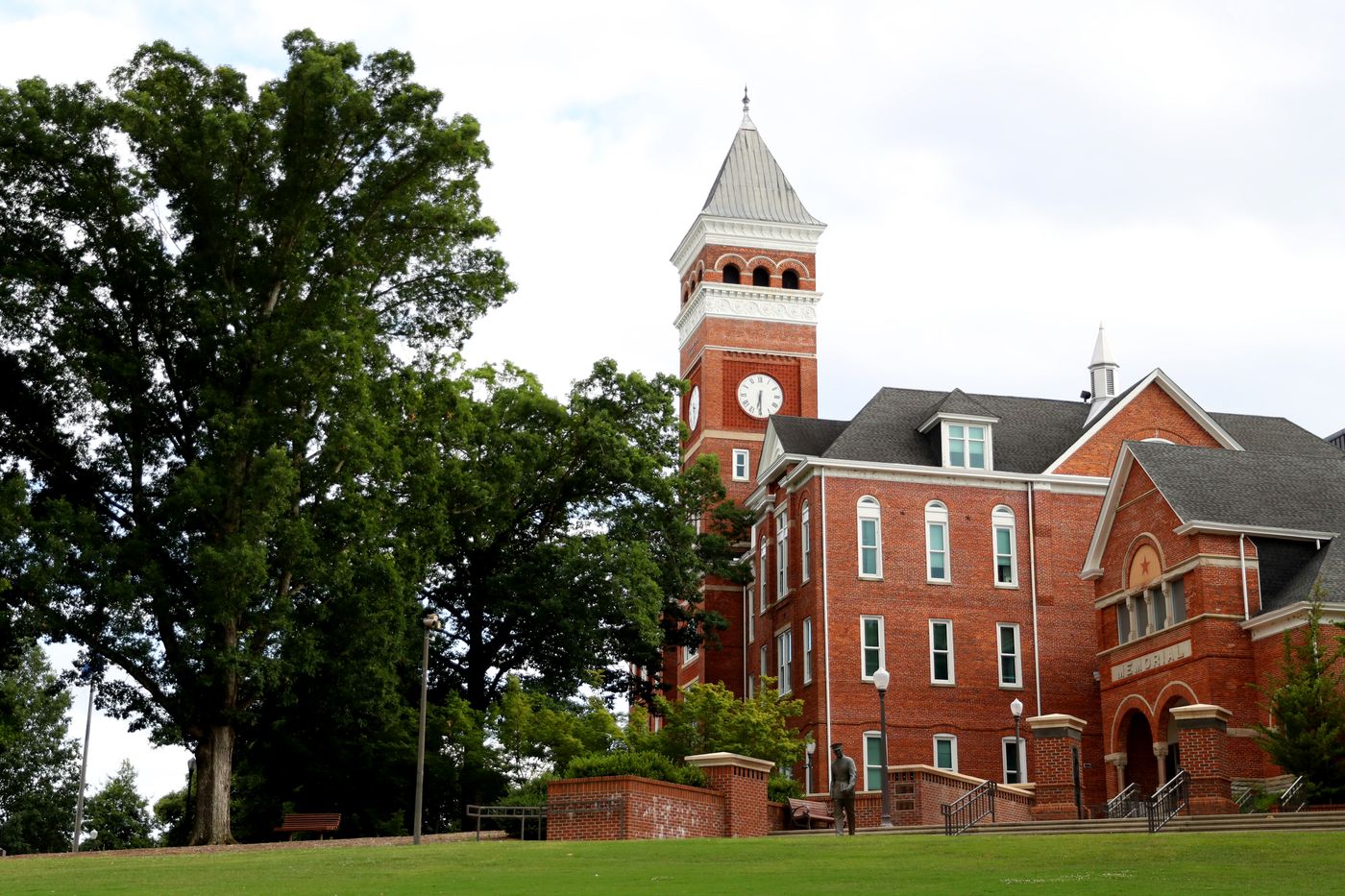
New Canaan’s in-state flagship, the University of Connecticut, remains the most applied-to school among seniors. In addition to those big, public flagships in other states, private schools in the South are also popular with Elon University now cracking the top ten.
Selective New England liberal-arts schools like Bates and Bowdoin — which still have acceptance rates around 10 percent overall — will likely be fine. They have large endowments. They need to enroll only around 500 students a year. And they’re able to satisfy enough students who want a business degree by offering an economics major. But beyond the very top of the rankings, the demographic math gets much grimmer for small institutions, which make up more than 40 percent of the U.S. higher-education market.
The demographic cliff comes at a moment when families are growing more skeptical about paying large tuition bills. A long-running survey by Sallie Mae and Ipsos captures the shift: In the mid-2010s, around 85 percent of parents and students said that college was an investment in the future; by 2024, just 56 percent felt that way. And only 41 percent said in 2024 they were willing to “stretch themselves financially to obtain the best opportunity for their future,” versus nearly 60 percent a decade earlier.
A shrinking pool of students in the years ahead has many parents hoping they’ll benefit from bigger tuition deals. Even in today’s relatively positive demographic environment, some schools are already offering substantial tuition price cuts. The average discount for freshmen at private colleges nationwide is 56 percent. “I’m not sure how much more they can discount until they’re not bringing in enough money to actually pay their expenses,” said Massa, the former Johns Hopkins admissions dean.
The chief financial officer of a small liberal-arts school told me that each year the college’s freshmen contribute less toward its net revenue than the previous incoming class. His only hope to generate additional revenues is through higher charges for room and board. That’s why many private colleges require students to live on campus — they turn a profit on your living expenses that subsidizes other operations and services.
The rapid deterioration of students paying full tuition has been most acute at small liberal-arts colleges that rank between 51 and 100 in U.S. News. In 2022, nine out of every ten full-pay students who went to any liberal-arts college were enrolled at a school in the top 50. When basically everyone gets an unfunded discount at a college, the student experience will suffer.
“Most of the schools that give the best merit are in financial straits,” Ann told me matter-of-factly when we first met. The mother of three and a vice-president of digital marketing in the Northeast, Ann had been researching colleges for her children since they were in middle school. She and her husband, a teacher, make around $270,000 a year; with three kids in college at the same time, securing the lowest net price for each was crucial.
One of her kids ended up at Paul Smith’s College, a small school in upstate New York that was subject to increased financial oversight by the federal government because of concerns that it might run out of money. Another enrolled at Clarkson University, and during their sophomore year, the school announced cuts to several liberal-arts majors, in part to close a reported $7 million deficit. The same year, Moody’s revised its outlook for Clarkson to “negative.” The analyst noted the school’s “steadily rising discount rate and softening net tuition per student,” market troubles that “add significant obstacles to sustainably returning to fiscal balance.” Elsewhere in the report, Moody’s warned of a “rising age of plant” and “reliance on supplemental endowment draws.” Translation: Older buildings will need upkeep and the college is already dipping into its endowment for extra cash.
For Ann, the tradeoff was worth it: predictable discounts that made financial sense for her family even if that meant living with some financial uncertainty on campus. With a few exceptions (for example, the big Wall Street banks or the heavyweights among consultants), “the name on the diploma doesn’t matter much in hiring,” Ann said. “So it didn’t make sense to pay 10, 20, 30 thousand more a year, for what? Because the campus is nicer?”

The best way for families to determine how a school is doing financially — beyond getting access to internal balance sheets and budgets — is to look at its bond-rating reports. Three major agencies rate colleges: Moody’s, Standard & Poor’s, and Fitch. Most of the underlying information is publicly disclosed on the agencies’ websites. Much like credit reports for people, bond ratings assess the risk of lending money to the school. While individual borrowers receive a credit score, colleges are assigned a letter or letter/number combination.
What the analysts for the bond-rating agencies are increasingly finding is that many colleges aren’t bringing in enough revenue to cover expenses. More than 40 percent of private colleges posted a loss in 2023, the most recent fiscal year publicly available; 20 percent of public colleges did, according to Robert Kelchen, a professor at the University of Tennessee, who studies college finances. Some 50 colleges in his analysis have been running deficits for eight or more of the past ten years. “Unfortunately, these aren’t data points easily available to the public,” Kelchen said, “and even if they were, few families would pore over them like they do acceptance rates.”
In the early 1980s, the talk on campuses was much like it is today: of a demographic cliff as the last of the baby-boomers cycled through college. An influential report sponsored by the Carnegie Commission on Higher Education at the time warned of a “new depression” in the sector. It predicted that two-thirds of the colleges and universities in the United States were in or near grave financial difficulty.
But that bust never arrived. College enrollment actually increased by more than 20 percent during the 1980s and early 1990s, even as the number of high-school graduates declined. One reason was the recession of the early 1980s. It took a disproportionate toll on manufacturing in the U.S. economy and made the financial payoff of going to college well worth the cost. Second, more women, who historically didn’t go to college at the same rate as men, enrolled. By the 1990s, women began to outpace men.
The problem now is there aren’t similar levers colleges can pull to attract more 18-year-olds to campus. Undergraduate enrollment in the U.S. has already been on a decline since 2011 when it reached its peak. And the percentage of high-school graduates going straight to college is also falling after hitting a high of 70 percent in 2016; by 2022, the last year available, it had dropped to 62 percent.
Like the Carnegie Commission four decades ago, a report by Bain & Company in 2023 painted a dark picture of what’s to come for higher education: One-third of colleges are in “precarious financial positions.” Consolidations and cuts are starting to happen. This summer, six public colleges and universities in Indiana eliminated or combined more than 400 academic programs before a new state law took effect requiring them to get permission to continue low-enrollment programs. Colleges have long bragged about all the majors they offer as a sign of strength. But the reality is that very few students major in most of the programs listed in a college catalogue. On many campuses, half of the students are enrolled in just ten academic majors.
Colleges are also merging or being acquired by larger institutions. After taking over Mills College in Oakland, Northeastern University is now in the process of acquiring Marymount Manhattan College, a liberal-arts college in New York primarily known for its performing-arts programs.
Both of those plays were largely real-estate deals for Northeastern to gain a foothold in new metropolitan areas. The more likely scenario on the horizon for colleges that can’t make it is closure. Experts in higher-education finance predict if the worst-case scenarios come to pass, an additional 80 schools will close each year over the next decade, about double the annual average over the past one. Already in New York State, since 2023, Cazenovia College, Wells College, and the College of Saint Rose have closed.
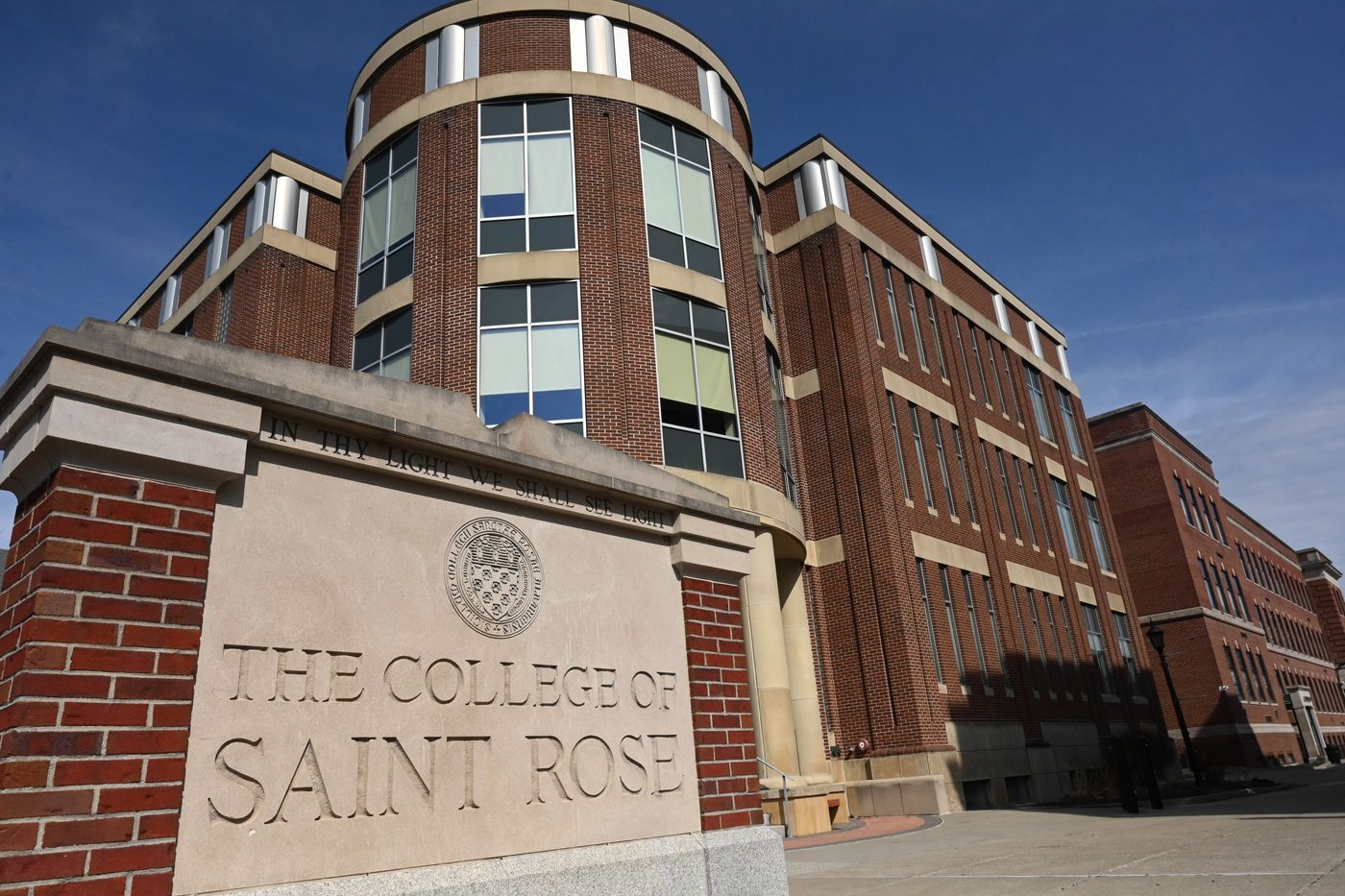
John B. King Jr., the chancellor of the 64-campus State University System of New York, told me there are enough students to go around the state “if we reach the students who haven’t historically been well served by the higher-education sector,” including returning adult learners and underrepresented students. “That said, if you look at the math, I think we’re going to see more private-college closures, not just in New York but throughout the country.”
When colleges close, the impact reverberates beyond campuses. Two of the three closures in New York were in small towns, where the college was the largest employer, the cultural center, and their students and faculty kept local businesses busy with customers. As New America’s Kevin Carey has noted, the demographic cliff risks accelerating the “geographic consolidation that is already upending American politics” as college-educated Democrats congregate in cities and coastal areas in which campuses will thrive — while people in rural towns, less likely to have degrees, might bear the brunt of closures.
When Wells College announced it was going out of business in 2024, I noted on social media that the institution had been recruiting new students for the following fall right up to the very end. Despite some noise about the troubles Wells was in, the school hadn’t sent clear signals that the end was near. My post about Wells attracted the attention of Doug Moore, who had been seeing the worrisome signals at Wells and other colleges.
Soon after, I met up with Moore at a private airfield in Schaumburg, Illinois, not far from Chicago, where he emerged from his Cirrus SR20 single-prop plane. I came to nickname Moore “The College Closer.” For years, he’d led the closure of industrial sites, until one day, a subcontractor mistakenly opened a gas line. “It nearly killed me,” Moore told me. Right around that time, he saw a presentation about the coming demographic cliff in higher education. Then someone asked him to help close a college in Iowa. The college work has only picked up since and is now his full-time gig.
He usually gets the call 90 days before closure, when it’s too late to save the school. “The die is cast, and it becomes a self-fulfilling prophecy as the media begins to pay attention,” he said.
As we stood on the tarmac, I asked him what he saw as the signs of a distressed college. He rattled off several — not paying vendors, borrowing against the endowment, and constant changes in leaders. He then mentioned one more that surprised me: a high percentage of students playing sports.
The outside bet that struggling colleges are making is adding athletic teams — especially niche ones — to boost enrollment. Division III schools in particular are falling into this trap. They aren’t allowed to offer sports scholarships, but plenty of students still want to play and aren’t good enough to play at the Division I level. That’s who these schools court. Overall athletic participation is growing in college with Division III seeing the largest growth, adding more than 17,000 athletes in 2022 through ’23 alone.
Adrian College, a liberal-arts school in Michigan, has more than doubled its enrollment to 1,600 over the past 15 years by adding more than 30 sports teams, including synchronized ice-skating, bass fishing, and varsity cornhole. Today, 70 percent of the student body are athletes. Fairleigh Dickinson University in New Jersey added two sports after school leaders brought in an outside economist to show that athletics should be judged not only on the costs but also on the potential to drive net tuition revenue. But as Moore noted, because most schools don’t closely track revenue and expenses by program, they can’t accurately say how much more tuition money they could net by offering football or field hockey. Nor can they sustain this strategy for growth.
“There are only so many sports you can add,” Moore observed. “And then what do you do?”
That question looms large for both colleges and prospective students. After decades of finding yet another student segment to tap for growth, higher education might be finally out of answers.
All sectors of the economy — even those that seem super-static like higher education — experience market disruptions that have a way of creeping up on us. The annals of business are filled with examples. Sears, Roebuck and Co., the first “everything store” long before Walmart or Amazon came along, has shuttered all but a few locations. Kodak failed to pivot to a digital world in time to stay on top, despite having the technology. When I mention these brands to my teenage daughters, they give me blank stares. Like Sears and Kodak, many colleges are losing the market power and relevance they’ve long enjoyed. After decades during which higher ed assumed growth was inevitable, it may have already reached its peak.
This article was adapted from Dream School: Finding the College That’s Right for You, by Jeffrey Selingo, published on September 9 by Scribner.

